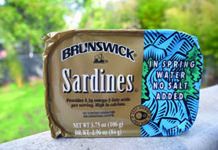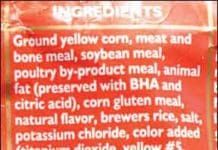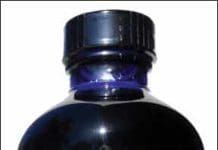Commercial Dog Food For Allergies
Owners who don't feel capable of or willing to carry out a rigorous trial may prefer to try a commercial dog food that has been processed in such a way as to render the proteins hypoallergenic, or one designed specifically for use in an elimination diet. Chances are good that your veterinarian carries at least one of these types of food. Some are limited-ingredient diets, available over the counter; others are prescription diets. All cost around 30 percent more than even the best nonprescription dog foods.
Dog Food Elimination Trials Are Worth The Effort
Allergies can literally cause a dog to tear his hair out, setting acute moist dermatitis (hot spots") into motion and triggering fits of paw-licking and head-shaking (caused by allergy-induced ear inflammation and infection). When this happens
About Dog Food Manufacturers and Co-Manufacturers
wholedogjournal_editorial
5 Steps To Determine How Much To Feed Your Dog
Each and every one of the six people who adopted the puppies I fostered recently asked me the same question: How much should I feed him?" I was surprised the first time
The Top 5 Things to Look for on a Commercial Dog Food Label
Recently I visited a fancy new pet supply store?* seriously, the fanciest store I've ever seen. It boasts a fenced and rubber-matted area for patrons' dogs to play while their owners shop; an area where owners can bathe their dogs (with warm water, cross ties in the raised tubs, shampoo and conditioner on tap, waterproof aprons, cool blow driers, and plenty of towels); an area where visiting veterinarians can provide vaccinations and basic health exams; a climate-controlled, glassed-in area for puppy and dog training classes; and, oh yeah, aisle after aisle after aisle of toys, beds, treats, shampoos, and lots and lots of dog (and cat) food.
Whole Foods in Vet-Prescribed Dog Food
Three months ago, I asked, Why can't veterinary nutritionists design recipes that meet most nutritional needs through the use of whole foods
New Guides In Town
When buying food for their dogs, owners depend on the product manufacturers to deliver a “complete and balanced” diet in those bags, cans, and frozen packages. Perhaps without even being aware of it, owners also understand that there are government agencies responsible for setting standards as to what constitutes a “complete and balanced diet” for dogs, and for making sure that pet food makers meet those standards.
Dietary Fats in Dog Food
As soon as a food is manufactured, it begins to undergo a variety of chemical and physical changes. It's a basic law of the universe (the second law of thermodynamics) that everything degrades over time. This includes the proteins and vitamins in dog foods, but it's the fats I worry about the most.
Corn-Containing Dog Food at Increased Risk of Aflotoxin
Fungus is more than a nuisance when it comes to corn; it can be deadly to dogs (and humans). Actually, it’s not fungus itself that’s a problem; the peril is a secondary chemical product created by the metabolic process of certain fungal species, in particular, Aspergillus flavus and Aspergillus parasiticus. Aflatoxin, the chemical produced by these fungi is not just toxic, it’s one of the most carcinogenic substances known to science.
The Benefits of Fish Oil to Your Dog’s Health
Fish oil is probably the most important supplement you can add to your dog's diet, regardless of what type of diet you feed. EPA and DHA, the omega-3 fatty acids in fish oil, provide widespread benefits, but they are fragile and unlikely to survive storage in bags of kibble, or may be rancid even before being added to pet foods. Krill oil and whole fish also provide EPA and DHA that may be better absorbed, providing similar benefits in smaller doses.
Calculating a Dog Food Diets Protein, Fat, Carbs, and Fiber
It is not easy to figure out how much fat and other nutrients are really in the food you feed, whether it's kibble, canned food, or a home-prepared raw or cooked diet. Here are some tips that can help. There are three different ways of measuring amounts of protein, fat, carbohydrates, and fiber in foods.
Pet Food Companies and Animal Research: What Do They Do?
In recent years, the pet food industry has discovered the benefit of sharing more information about its products, manufacturing and research and development with consumers. In a highly competitive market, it's advantageous to project a confident image of full transparency - as long as the company is doing everything they say they are doing. In the wake of a substantial amount of bad PR from a nearly decade-old PETA campaign showing conditions of research animals, Whole Dog Journal had the opportunity to conduct extensive tours of two large pet food manufacturers' research facilities.















